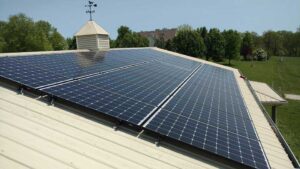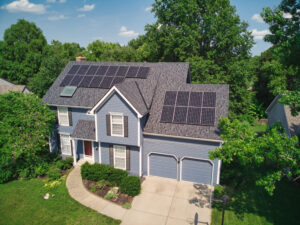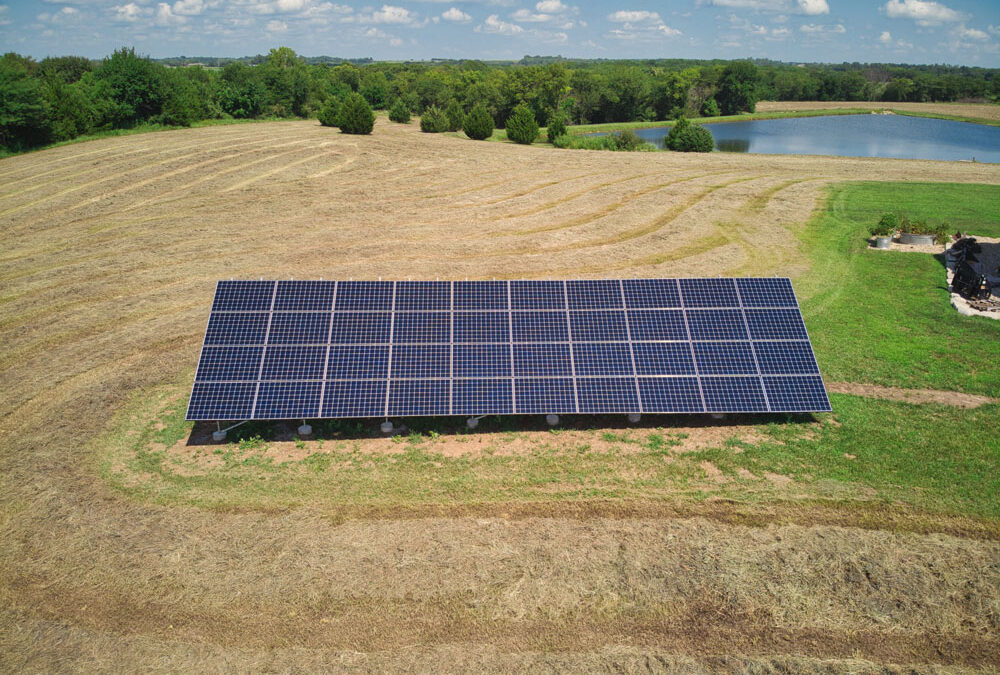Here at Good Energy Solutions, we’re getting more inquiries about installing solar panels on homes and businesses than ever before. As we see advances in solar technology, reductions in its price and more awareness about the crucial role solar power plays in our future, the future looks bright for solar energy growth in Kansas and Missouri.
Despite the coronavirus pandemic in 2020, the U.S. solar industry had a record year. It saw a staggering 43% year-on-year growth in 2020, in its biggest ever year for annual installations with 19.2 gigawatts of new solar capacity. By 2030, solar installations are expected to quadruple from current levels.
 Closer to home, the amount of electricity generated in Missouri from solar farms and home solar installations is on the rise and has more than tripled since 2014. More than 75% of the state’s solar power comes from small-scale systems, like roof-mount and ground-mount systems installed at both homes and businesses.
Closer to home, the amount of electricity generated in Missouri from solar farms and home solar installations is on the rise and has more than tripled since 2014. More than 75% of the state’s solar power comes from small-scale systems, like roof-mount and ground-mount systems installed at both homes and businesses.
While Kansas is among the 10 sunniest states in the country, it doesn’t capitalize on this enormous energy advantage. Kansas has very few utility-scale (1 megawatt or larger) solar installations. On the upside, Kansas has seen a boom in solar generation, with state-wide installations producing five times more power in 2020 than in 2019. Power generation from small-scale (less than 1 megawatt) installations accounts for slightly less than the amount of power created by Kansas’s six utility-scale solar farms in 2020.
With the amount of solar installations on the rise in both states, it’s important to examine some of the reasons for the rising demand for solar power here in the midwest.
1. Increased Awareness
 Like most new and innovative products, solar panels have taken time to catch up to other technologies. With monetary incentives and and new laws, the solar industry has continued to flourish on both the west and east coasts. As the trend to power homes and businesses with solar energy moves inward towards the midwest, we expect more solar installations, both big and small, to power Kansas and Missouri.
Like most new and innovative products, solar panels have taken time to catch up to other technologies. With monetary incentives and and new laws, the solar industry has continued to flourish on both the west and east coasts. As the trend to power homes and businesses with solar energy moves inward towards the midwest, we expect more solar installations, both big and small, to power Kansas and Missouri.
2. Lower Costs
Solar system prices will continue to drop over the next decade, driven by advances in module efficiency, manufacturing, labour practices and software, according to Wood Mackenzie. From 1976 to 2019, the cost of a photovoltaic module dropped from $1.06 per watt to $0.38 per watt. Solar used to be much more expensive than coal-fueled power plants, but as the technology improves, so does the value. In 2009, building a new solar farm was 223% more expensive than building a new coal plant. Now, it’s flipped. David Feldman, a senior financial analyst at the U.S. Department of Energy’s National Renewable Energy Laboratory says that solar is becoming more affordable. “The technology itself continued to improve in terms of efficiency, reliability, longevity, so there are all these other things in additional to scaling up.”
 3. Finite Natural Resources
3. Finite Natural Resources
As the price of solar installations becomes more affordable, traditional energy sources like coal, nuclear and natural gas continue to become more expensive. As sure as the sun is to rise every morning, supply concerns and rising demand will all but guarantee that you can expect to pay more for traditional energy sources in the coming years.
In the near future, all of this adds up to a sunny outlook for increased solar energy adoption in Kansas and Missouri, as long as lawmakers and individuals continue to see the benefit of this clean and economically efficient technology.
“There’s no doubt that solar will increasingly be part of our energy makeup in the coming months and years. Where the challenge lies is ensuring the appropriate policies are in place to enable the adoption of solar by businesses and individual property owners,” says Jessica Lucas, consultant for The Climate + Energy Project, a Kansas-based, nonpartisan 501(c)3 nonprofit driving practical solutions for an equitable transition to a clean energy future. “Overregulation of the industry or punitive fees will result in consumers losing access to their ability to self-generate. As an industry, we must remain focused on educating about the benefits of solar power and making sure policymakers value solar as a generation option.”
If you would like more information about financial incentives for solar, how to use solar to save money every month or the costs involved with solar installations, you can contact us here or at (785) 371-1198

